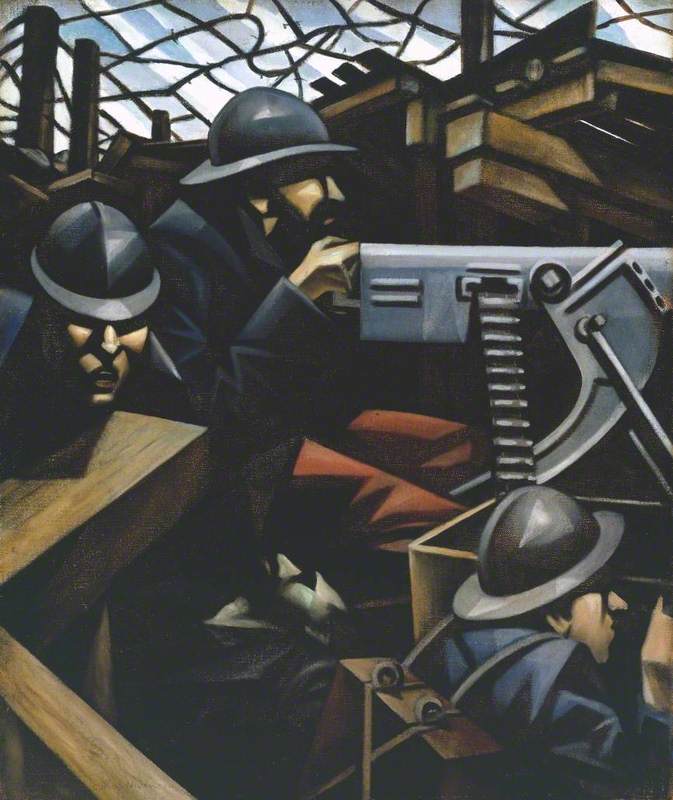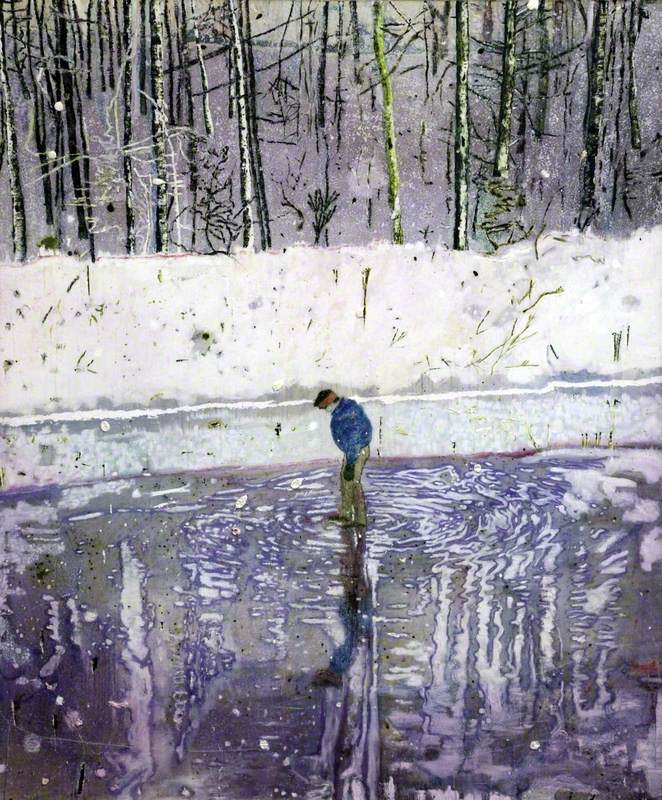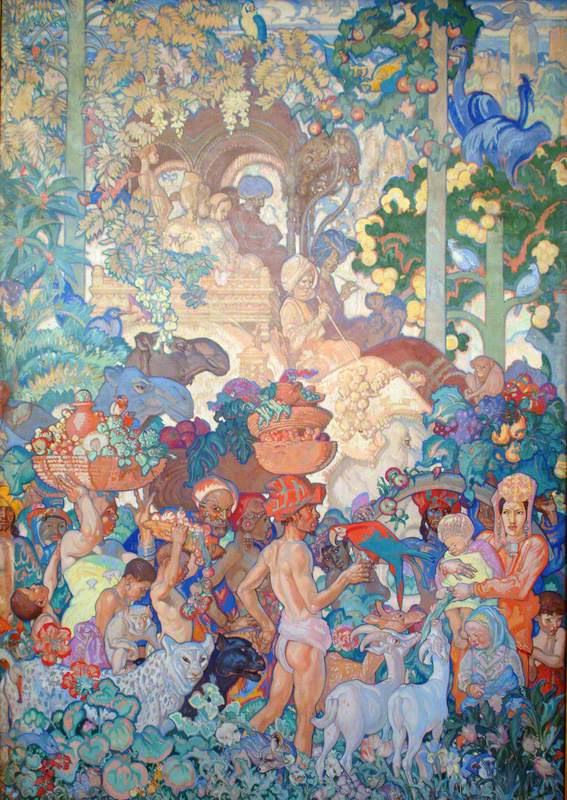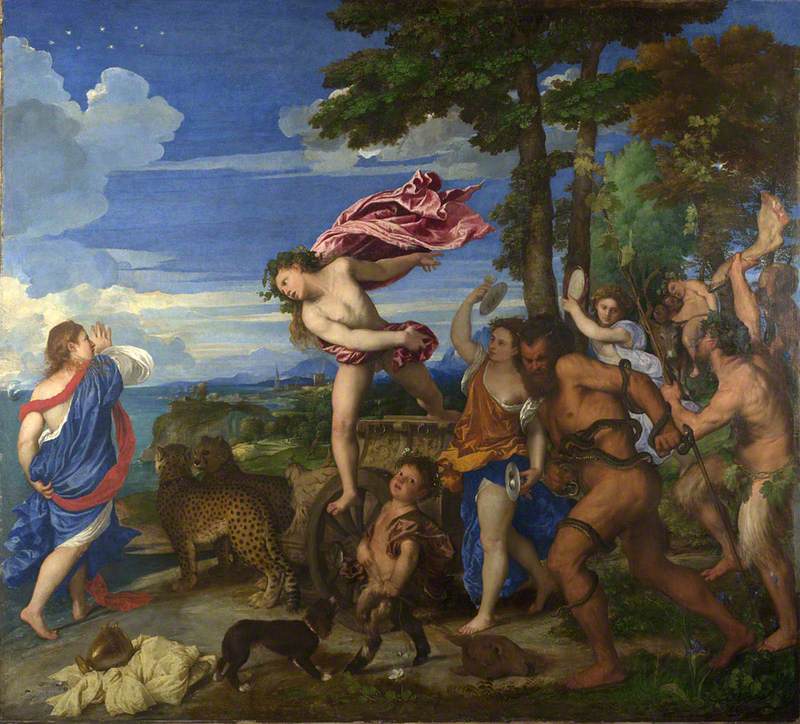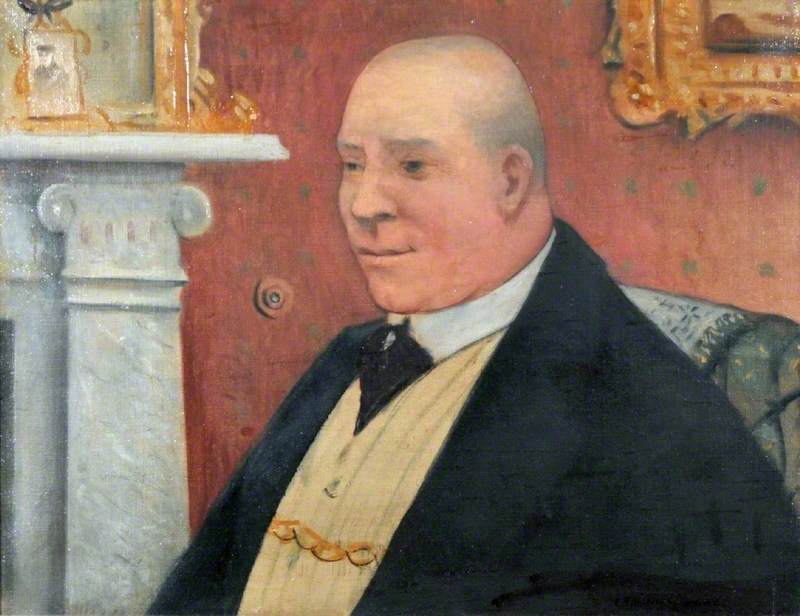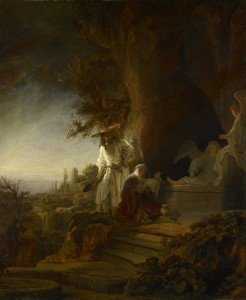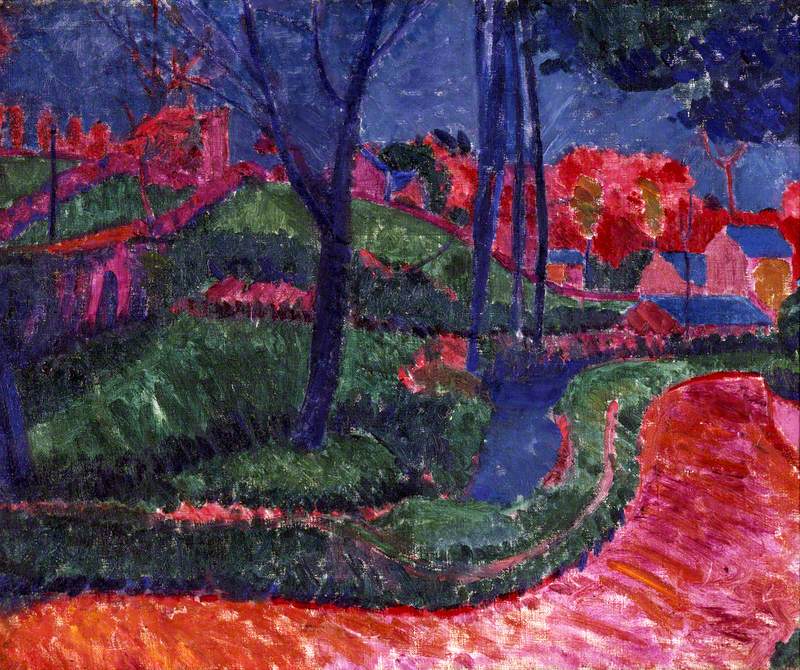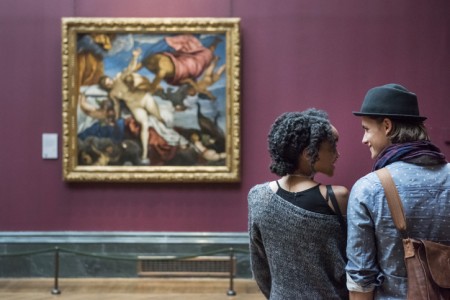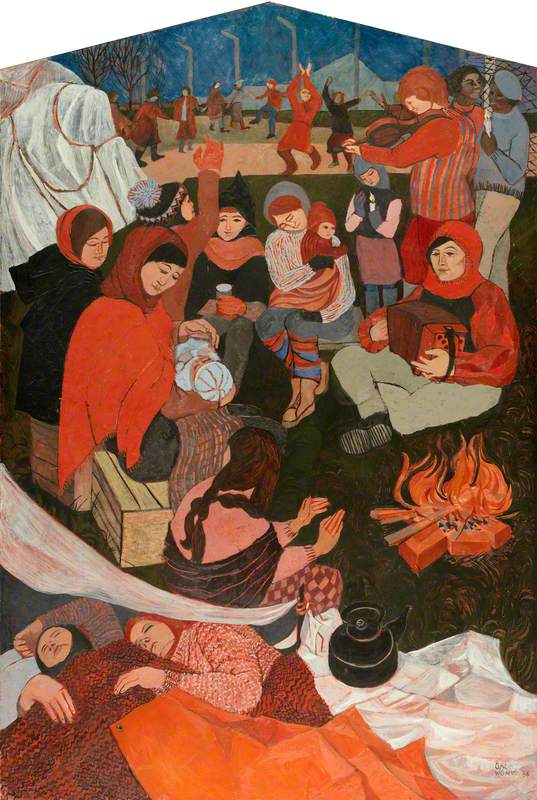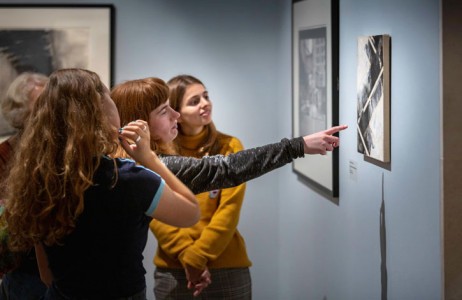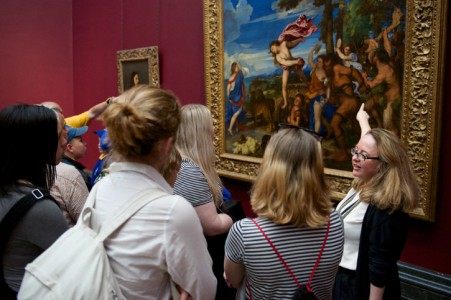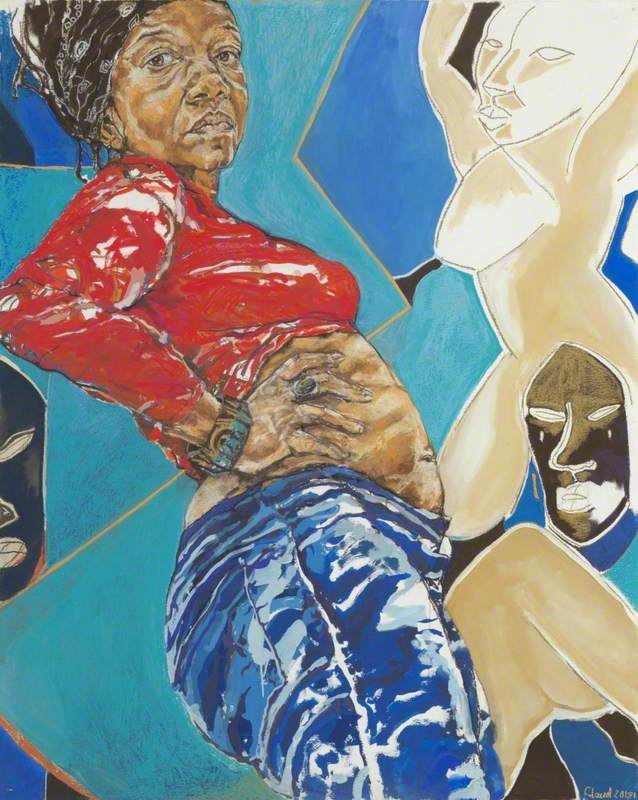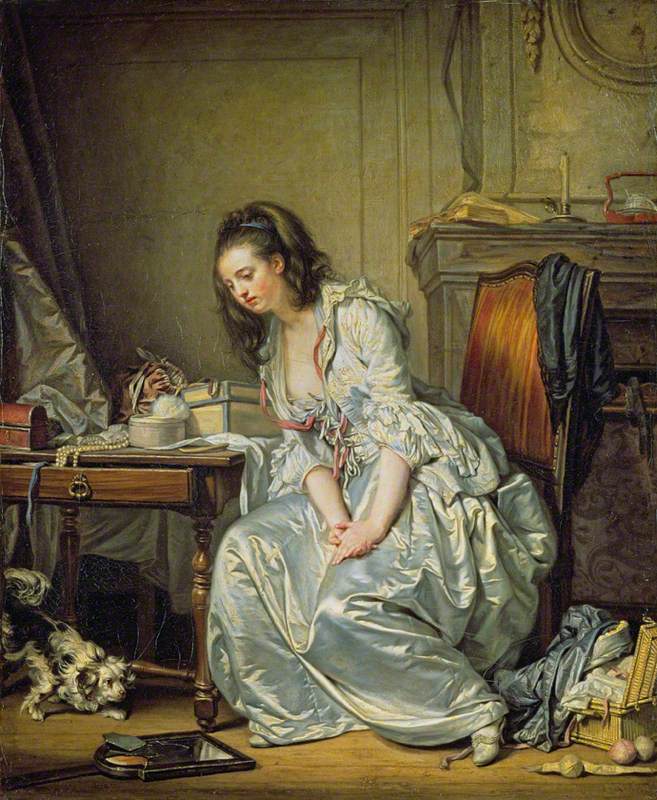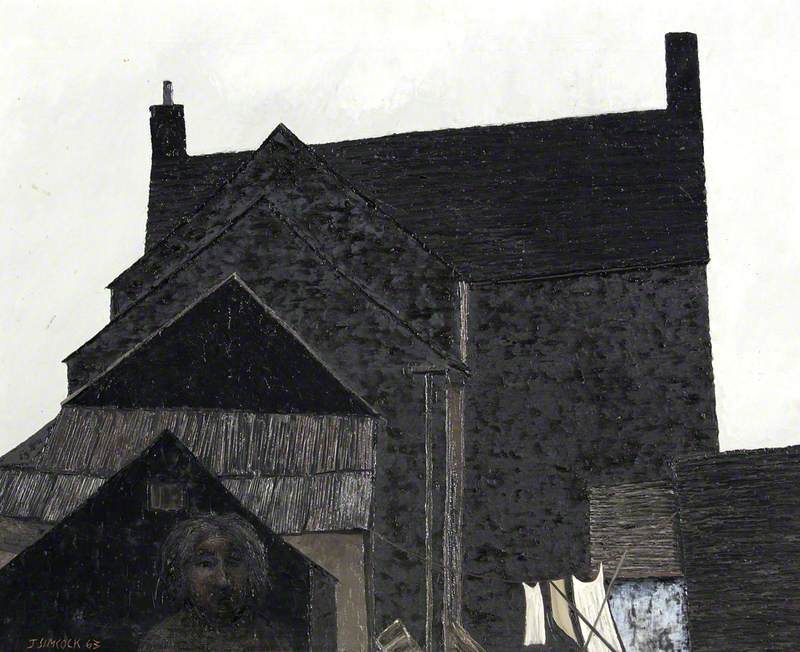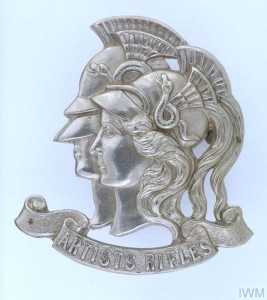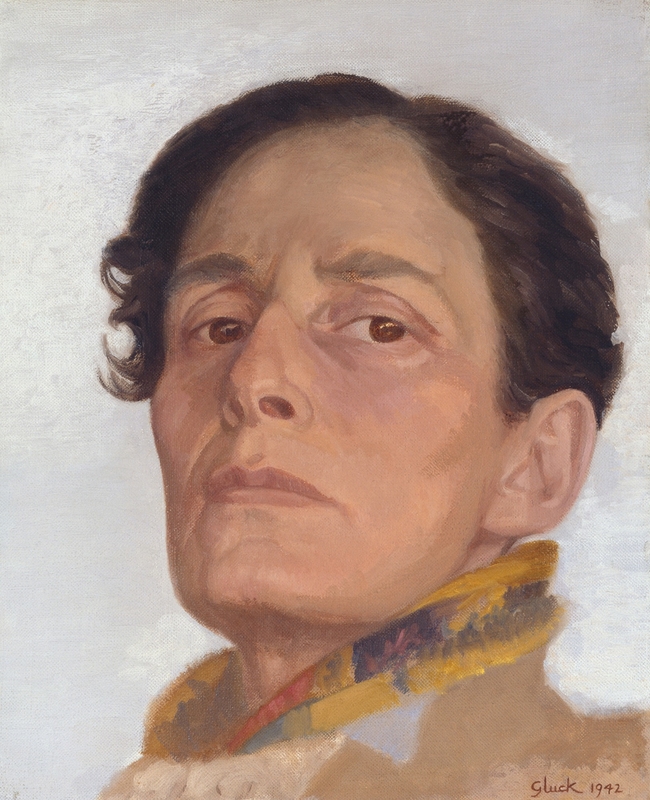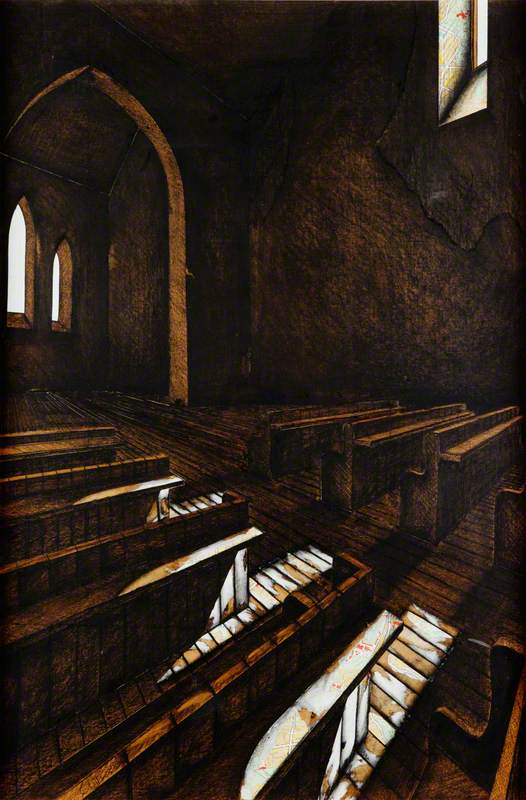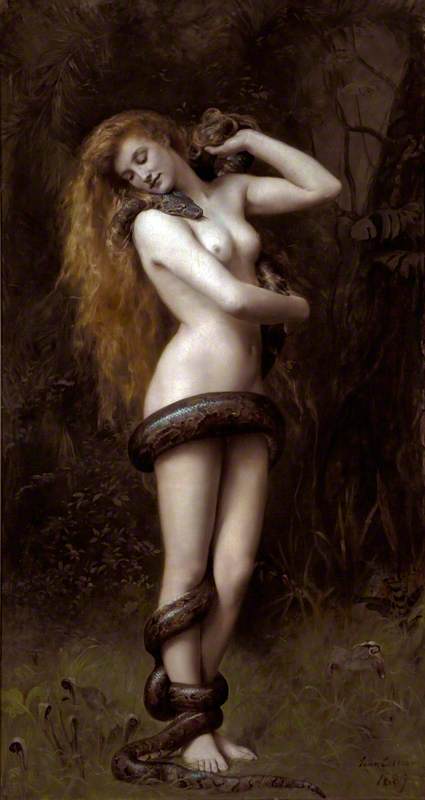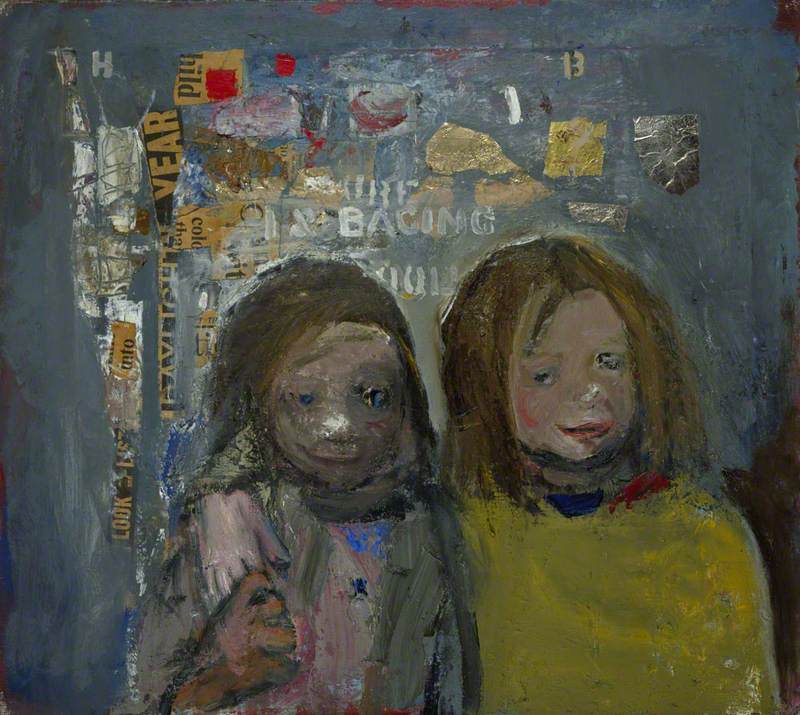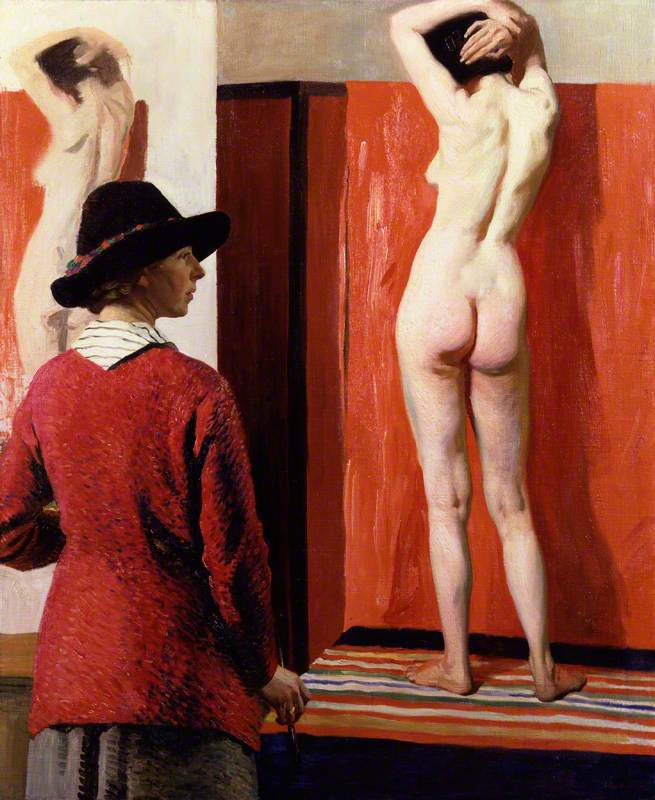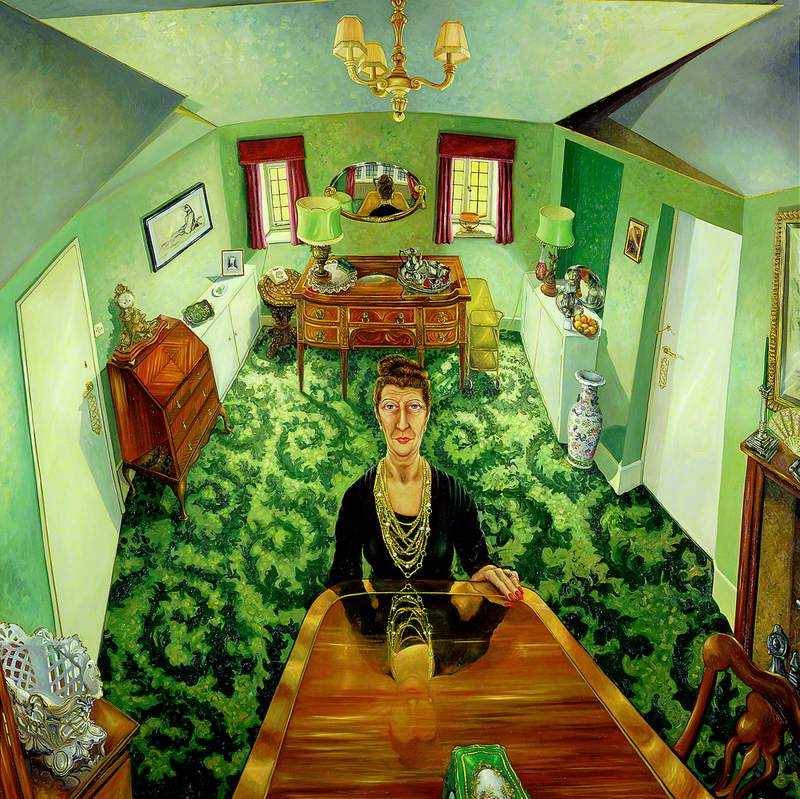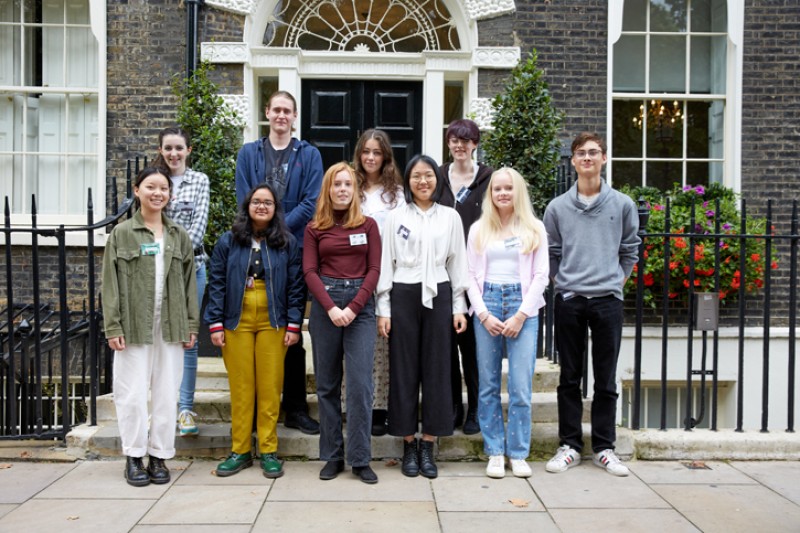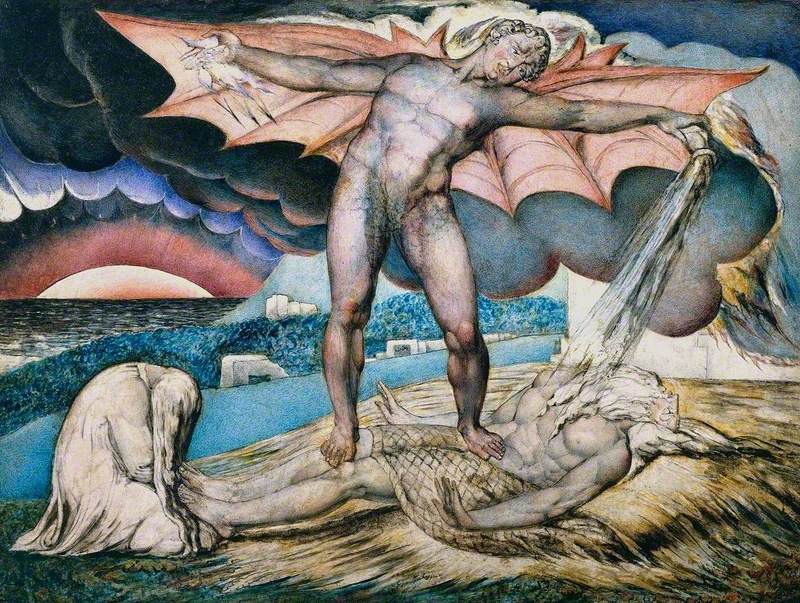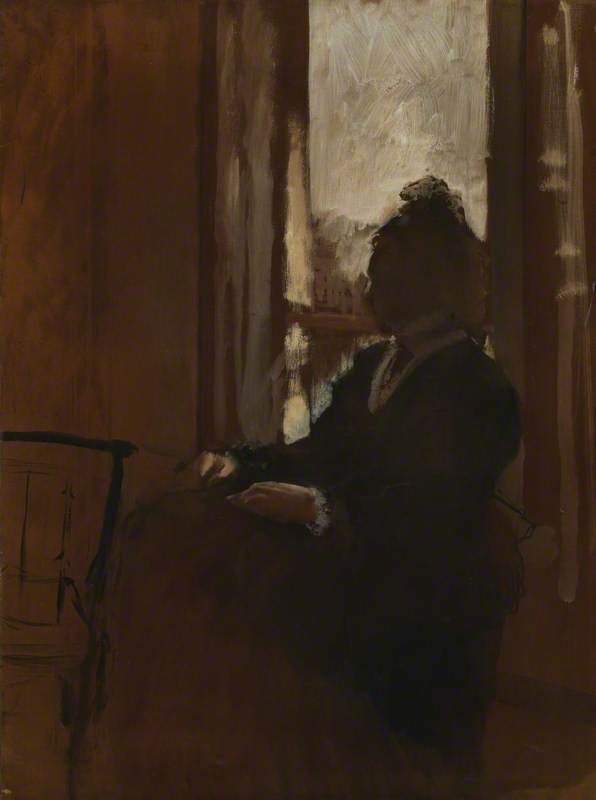This essay was written for the 2019 Write on Art prize, winning first place in the Year 10 & 11 category.
This painting was produced by Christopher Richard Wynne Nevinson in 1915.
It depicts three French soldiers beneath a shadow of a trench. Underneath a sky and closed by 'criss-cross' barbed wire.
There is striking juxtaposition in the image as the Cubist style he uses makes the faces 'appear almost like machines' – without features, as the figures are broken down into 'mask-like' shapes – and yet the image is overshadowed by religious symbolism.
This includes the glass-like panes of blue and white in the sky between the leadwork effect of the barbed wire. In the bottom left of the image, the wooden bracing that one of the figures is shown to be carrying almost suggests the shape and scale of a crucifix; like a Station of the Cross image. This is reminiscent of the symbolism in Christ in the House of His Parents by John Everett Millais. This may metaphorically suggest how the soldiers sacrifice their lives to save the civilian population of the future.
On the left of the image, the three posts silhouetted by the sky suggest the image of the three crosses on the top of the hill of Calvary. The shafts of white light behind them are like those in the chiaroscuro of Rembrandt in his 1653 print The Three Crosses.
The central focus on the red trousers one of the figures is wearing is another method used by the artist to portray symbolic sacrifice in the Great War. This echoes the red clothing in Christ in the House of His Parents, which also symbolises future sacrifice.
The shapes are angular and violent which shows the influence of the Italian Futurism style on Nevinson's work. However, the picture has deeper meaning by contrasting violence and peace. The simplistic sharpness of Nevinson's style depicts the emotional horrors of war in a violent way. This made me think of the style adopted by the Bristolian artist Banksy in the way he also uses a raw political – sometimes violent and offensive – subject to also make people think about war and world issues.
I am moved by this painting because I have experienced going to the trenches in Belgium and France, understanding the physical and mental darkness of the environment. The graphic style is still so relevant to young people today, over a century later. The painting has catalysed my interest in art and historical events in paintings.
Jack Harrison
